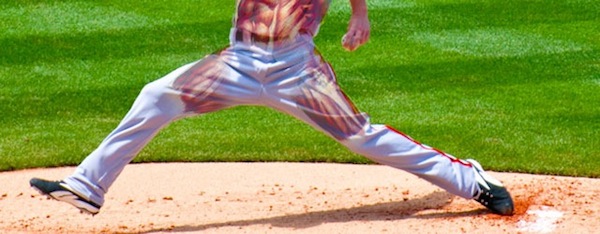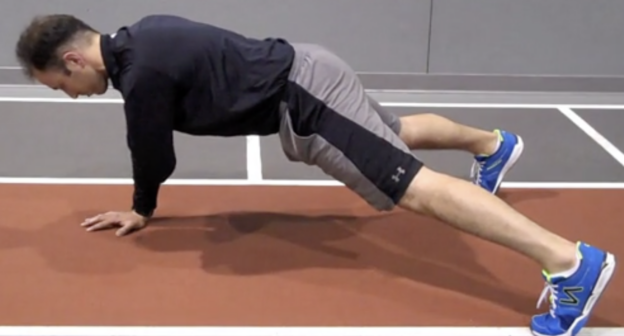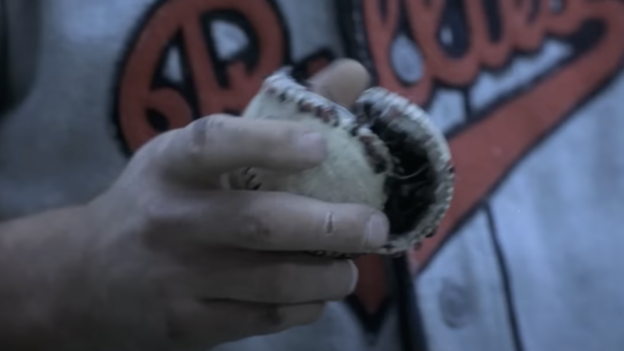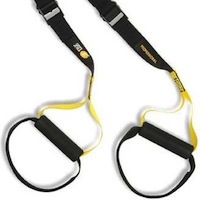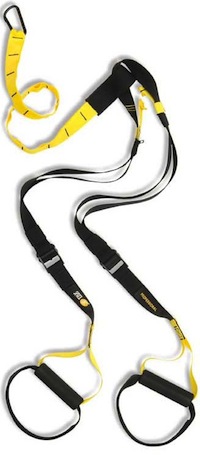For baseball players, the “core” is the engine that drives performance. It plays a critical role in every aspect of the game, from explosive throws and powerful swings to quick movements on the field. However, training the core effectively for baseball goes beyond traditional sit-ups and crunches. It requires a focus on stability, rotational power, and functional movement patterns that translate directly to on-field success.
Let’s cover some essential core exercises for baseball players, categorized into three main areas: stability, anti-rotation, and rotational power. Each section explains the benefits of these exercises, how they support baseball-specific movements, and tips for implementation.
1. Stability: The Foundation of Core Strength
Core stability is the ability to maintain control and resist unwanted movement through the trunk and pelvis. For baseball players, this is essential for maintaining balance during dynamic actions like throwing, hitting, and sprinting.
Plank Variations
Planks are a staple of core training because they target the entire midsection, including the rectus abdominis, obliques, and transverse abdominis. Variations add challenges that mimic baseball-specific movements.
- Standard Plank: Maintain a straight line from shoulders to heels, engaging the core, glutes, and quads. Start with 30-second holds, progressing to longer durations.
- Side Plank: Targets the obliques, crucial for lateral stability. Perform with the forearm on the ground and hips lifted. Add a hip dip for extra activation.
- Plank with Shoulder Tap: Increases anti-rotation demands. While in a plank, alternate tapping your shoulders without letting your hips twist.
Dead Bug
The dead bug reinforces core stability while moving the arms and legs independently, simulating the coordination needed in baseball actions.
- Lie on your back with arms and legs extended upward.
- Slowly lower one arm and the opposite leg toward the ground, keeping your lower back flat.
- Alternate sides for 8–12 reps per side.
2. Anti-Rotation: Controlling Unwanted Movement
Anti-rotation exercises are vital for baseball players because they train the core to resist twisting forces, improving balance and protecting the spine during high-intensity movements.
Pallof Press
A go-to anti-rotation exercise, the Pallof press challenges the core to resist lateral forces.
- Attach a resistance band to a sturdy anchor at chest height.
- Stand perpendicular to the anchor, holding the band with both hands at your chest.
- Press the band straight out, resisting its pull back toward the anchor.
- Perform 10–12 reps per side.
Standing Anti-Rotation Chop
This exercise trains the core to stabilize against rotational forces while standing, closely mimicking throwing and hitting motions.
- Use a cable machine or resistance band.
- Stand with feet shoulder-width apart, holding the band or cable handle with both hands.
- Pull the handle diagonally across your body, resisting the urge to twist your torso.
- Perform 8–10 reps per side.
Suitcase Carry
The suitcase carry strengthens the obliques and reinforces proper posture, key for maintaining balance in dynamic baseball movements.
- Hold a dumbbell or kettlebell in one hand at your side.
- Walk in a straight line, keeping your torso upright and avoiding leaning toward the weight.
- Walk for 20–30 yards, then switch sides.
3. Rotational Power: Translating Strength to Performance
Rotational power is the core’s ability to generate and transfer force efficiently, a critical component of hitting, throwing, and pitching.
Medicine Ball Rotational Throws
Medicine ball throws are excellent for developing rotational power and mimic the explosive twisting movements of hitting and pitching.
- Stand sideways to a wall with your knees slightly bent.
- Hold a medicine ball at waist level.
- Rotate your torso and throw the ball against the wall as hard as possible, focusing on a controlled follow-through.
- Perform 8–12 throws per side.
Cable Woodchopper
The woodchopper strengthens the rotational muscles while allowing for controlled movement through a full range of motion.
- Attach a cable to a high anchor point.
- Stand sideways to the cable, holding the handle with both hands.
- Pull the handle diagonally downward across your body, pivoting your back foot for a full rotation.
- Perform 10–12 reps per side.
Rotational Landmine Press
This exercise integrates rotational power with upper body strength, closely simulating the throwing motion.
- Place one end of a barbell into a landmine attachment or secure it in a corner.
- Hold the barbell with one hand, standing perpendicular to it.
- Rotate your torso as you press the barbell upward and outward.
- Perform 8–10 reps per side.
4. Core Integration: Combining Stability and Power
In addition to specific core exercises, integrating core strength into compound movements and full-body exercises ensures the core functions dynamically in game-like scenarios.
Turkish Get-Up
The Turkish get-up combines core stability, shoulder mobility, and full-body coordination, making it a powerful tool for baseball players.
- Lie on your back holding a kettlebell in one hand, arm extended.
- Use your opposite arm and leg to assist as you rise to a standing position, keeping the kettlebell overhead.
- Reverse the movement to return to the starting position.
- Perform 3–5 reps per side.
Farmer’s Walk
A loaded carry like the farmer’s walk challenges the entire core while building grip strength and postural endurance.
- Hold a heavy dumbbell or kettlebell in each hand.
- Walk for 20–40 yards, keeping your torso upright and shoulders back.
- Increase the load as strength improves.
Overhead Pallof Press
This variation of the Pallof press integrates core stability with shoulder strength, perfect for pitchers and outfielders.
- Perform a Pallof press but with the band or cable extended overhead.
- This increases the demands on the core and shoulders to resist movement.
Tips for Implementation
- Start with Basics: For beginners, focus on mastering bodyweight stability exercises like planks and dead bugs before progressing to dynamic or weighted movements.
- Focus on Form: Prioritize proper technique to prevent injury and maximize effectiveness. For example, in rotational throws, ensure the hips initiate the movement, not the arms.
- Include Core in Every Session: While core-specific workouts are beneficial, many compound lifts (e.g., squats, deadlifts) also engage the core. Incorporate dedicated core exercises 2–3 times a week for best results.
- Progress Gradually: As athletes build strength and coordination, increase the complexity or resistance of exercises, such as moving from a standard plank to a plank with shoulder taps or from Pallof presses to standing chops.
Building a Game-Ready Core
Core training is more than just developing a six-pack; it’s about building a resilient, powerful, and balanced powerhouse that enhances every aspect of a baseball player’s game. By focusing on stability, anti-rotation, and rotational power, athletes can develop a core that withstands the demands of the sport while improving performance on the field.
Be sure to subscribe to subscribe to the Baseball Training Methods Newsletter on the right side of the page to get the latest articles and baseball training workouts delivered right to your inbox.

